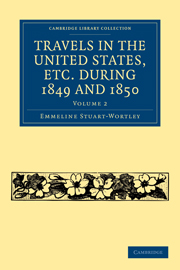Summary
We went to hear the military band play last evening in the Grand Square: it was a splendid band, and played several opera airs beautifully. Many ladies were walking up and down, generally attended by caballeros; but the greater part of the distinguées Habaneras were in their volantes, each fair señorita looking like the Reine des fées, crowned with flowers. The muchedumbre (mob or crowd) were standing about, evidently enjoy ing the music; the negroes, and their sable dames and damsels, especially appear to delight in it. The whole scene is one of great beauty and enchantment: the lovely trees in the Grand Plaza, the magnificent crystal sun of the night,–that crown of glory–(which is so unlike that tame somewhat half-a-crown-like silver lamp, we call the moon, in our little northern nook), the flower-crowned ladies in those fairy chariots, sparkling with silver–the splendid liveries of the postilions–the gay military uniforms – the picturesque-looking negroes and negresses standing about (or sometimes dancing in their glee to the exhilarating tunes that are played)–the negresses occasionally in white dresses, scarlet satin shoes, yellow turbans, and blue scarfs, and various other such fantastical combinations of colours, with their great flaming eyes, á la flor de la cara– all unite to form a delightful and singular picture.
- Type
- Chapter
- Information
- Travels in the United States, etc. during 1849 and 1850 , pp. 212 - 234Publisher: Cambridge University PressPrint publication year: 2009First published in: 1851

